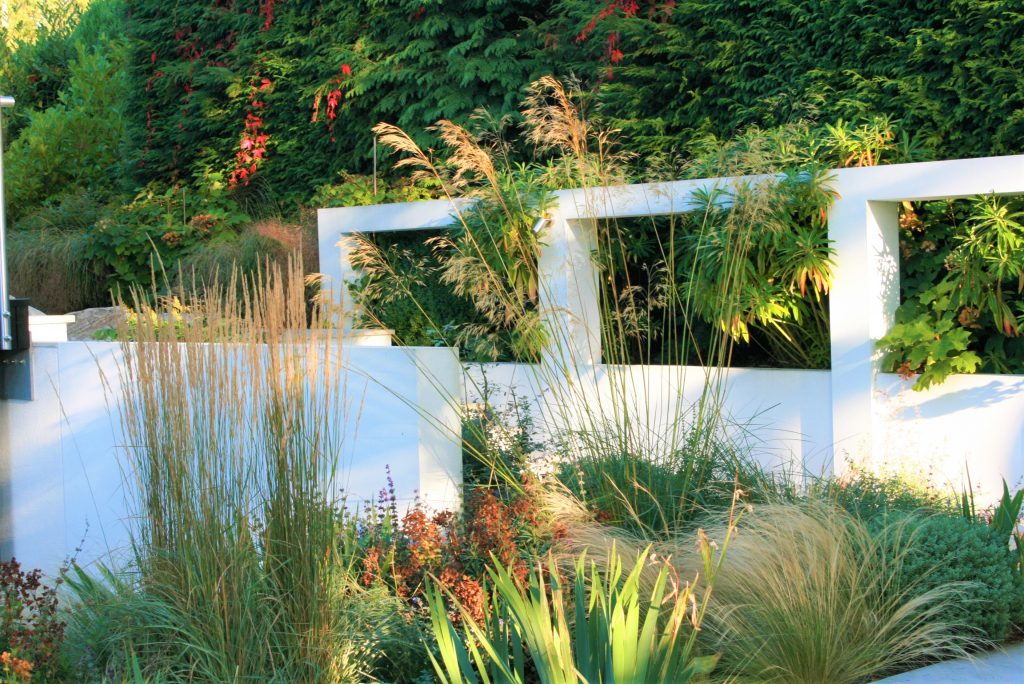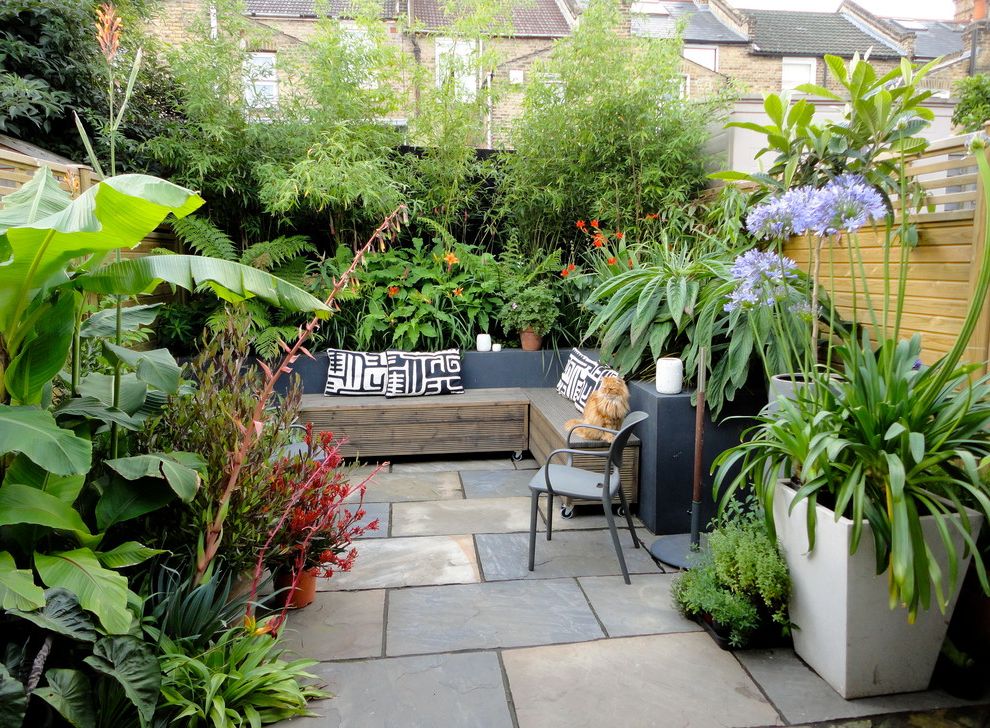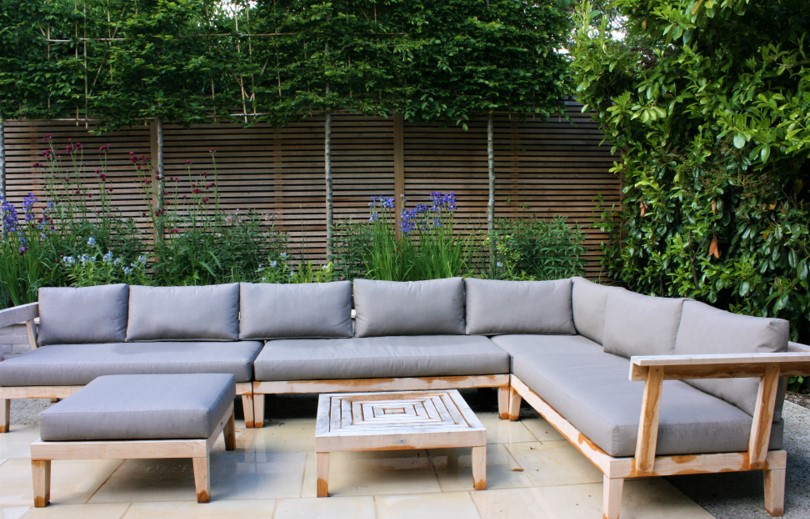Urban gardens can be found in both towns and cities. Usually much smaller than a rural garden, they are often enclosed by walls or fences and as such can become ‘external’ rooms that complement the owner’s individual property and lifestyle.
The success of these gardens often depends on establishing a sense of privacy without losing too much sunlight and maximising space in what can be a limited area.
If views outside of the garden can be restricted, they will have less influence on the style of the garden within, which can be both modern or traditional. With the evolution of folding sliding doors, a virtually seamless visual and physical link can be made between inside and out. A simple way to enhance this connection is to pick out a key internal design feature or finish and to repeat it outside. This can be flooring, furniture or even a wall colouring and it’s a great way to enlarge the perception of space in a kitchen/dining area for example.
Once the key functional requirements of the garden have been determined, the way light impacts the space should be carefully considered along with soil conditions any access issues.
A simple rectangular urban garden enclosed by fencing isn’t too different in principal to a large courtyard and this concept can help when creating an urban garden;
Courtyards feel safe and private, they usually have space to sit, simple paths that take you on a cyclical journey around them with trees and walls that contain your views of the outside. The pallet of materials and plants used is often limited and repeated, complimenting the architecture or local environment which in turn creates a sense of continuity and harmony.

Design and Landscape
- Flow from the house through to the garden is essential
- Try to keep attention within the garden by using suitable plants and trees
- Try to create a simple bold theme
- Decorate the vertical boundaries with climbers, trellis or art
- Make the layout bold and simple and don’t use too many different materials
- You don’t have to stick to traditional outdoor materials – these days porcelain tiles can be used both inside and out as can timber.
- Space to entertain is vital and stylish furniture can influence the overall theme
- Lighting is key – it can make the space appear bigger, draw your eye to certain elements and keep you outside for longer in the evenings. In winter you’ll be pleased to look out onto your beautifully lit garden, even if you can’t be out there enjoying it
- Outdoor cooking, fire places and kitchen gardens are popular in urban gardens, built in BBQ’s can save space but are less flexible if you need to move with the light.
- Venetian slatted fence panels can divide and screen but also allow light through
- Mixed materials e.g. concrete, stainless steel, concrete – you can soften these materials with lush green planting
- Built in seating areas to save space, even raised beds can double up as seating
- Built in storage – use the side return for built in garden storage provided there’s no side return extension
- Use straight lines but keep things off centre so the garden doesn’t become to boxy
- Fire pits or a built-in fireplace to create a focal point and heat lamps also provide warmth and extend the amount of time you spend outside in the evenings.
- A few big out of scale plants will break up the area and create drama rather than having lines of narrow bedding
- Dark fencing visually recedes and can actually reduce a sense of boundary especially with plants in front of it
- Mounted wall mirrors to create the illusion of space
- Pergolas and arbours can create ‘window’ views and help enhance a sense of privacy too
- Dramatic sculpture, pots and containers can be used as focal points or to soften hard corners
Planting
Use a small selection of hard-working plants that will give you the maximum all round colour and interest. Start with foliage interest and architectural shapes. Plant in repeated clumps and stick to limited colours. This doesn’t mean be grey and boring but it’s better to stick to lush greens to create colour. Instead of wide beds and borders save space and add colour through hedges and trees.
- Pleached trees for instant screening to create an oasis and block out any unwanted vistas
- Spring flowering trees that will also provide autumn colour such as Amelanchier and Crab Apple
- Architectural plants for structure and interest
- Plant in oversized pots
- Evergreen climbers to create heady scent and all year colour such as trachelospermum jasminoides and Clematis Early Sensation

Instant Screening
- Pleached Trees such as Hornbeam or Photinia x fraseri ‘Red Robin’ <find out more>
- Living Screens
- Evergreen Shrubs and Trees
- Evergreen Hedging
- Deciduous Hedging
- Instant Clipped Hedging
- Semi-Mature Climbing Plants

Things to avoid:
- Clashing colours in your planting scheme
- Low wide borders/beds
